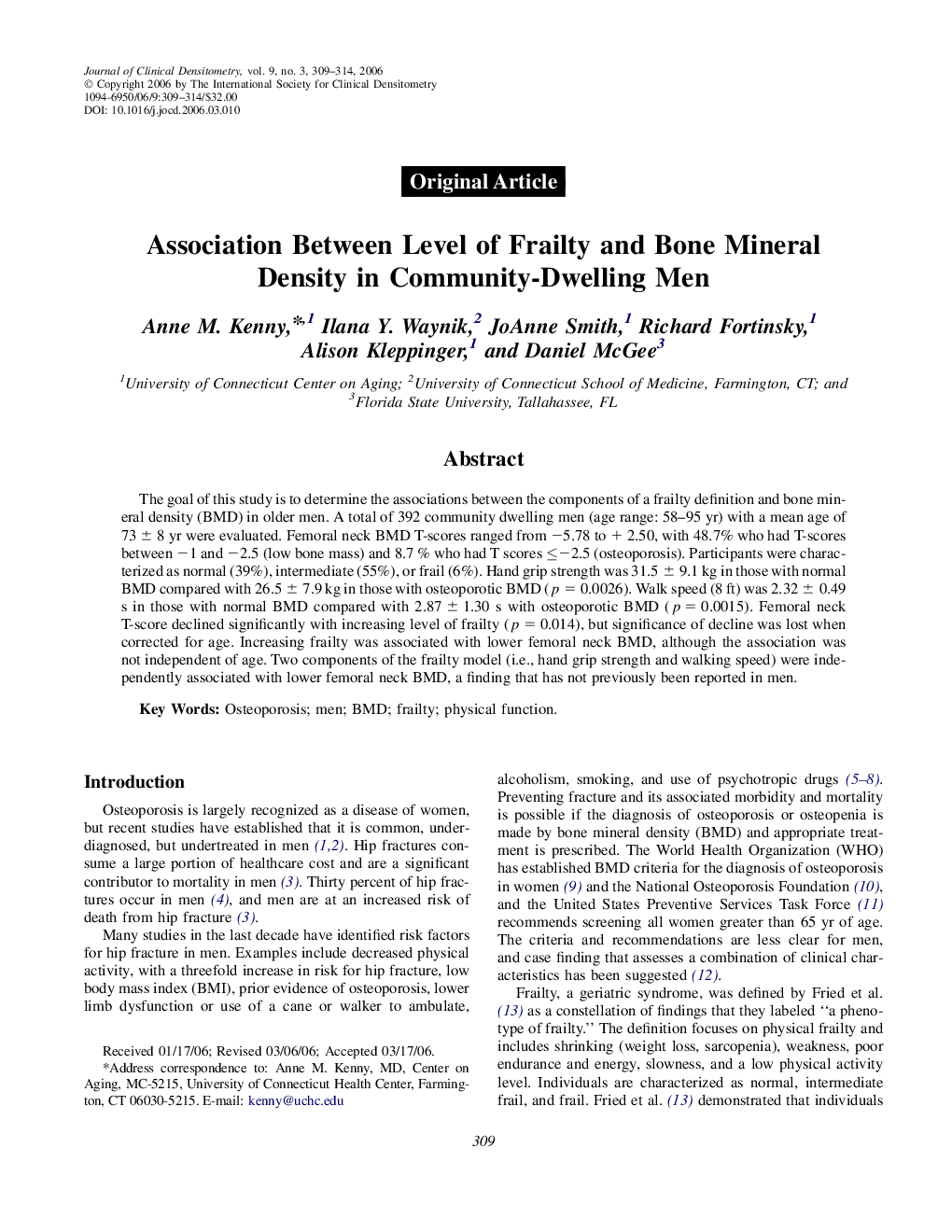| Article ID | Journal | Published Year | Pages | File Type |
|---|---|---|---|---|
| 3271829 | Journal of Clinical Densitometry | 2006 | 6 Pages |
Abstract
The goal of this study is to determine the associations between the components of a frailty definition and bone mineral density (BMD) in older men. A total of 392 community dwelling men (age range: 58-95 yr) with a mean age of 73 ± 8 yr were evaluated. Femoral neck BMD T-scores ranged from â 5.78 to + 2.50, with 48.7% who had T-scores between â 1 and â 2.5 (low bone mass) and 8.7 % who had T scores â¤Â â 2.5 (osteoporosis). Participants were characterized as normal (39%), intermediate (55%), or frail (6%). Hand grip strength was 31.5 ± 9.1 kg in those with normal BMD compared with 26.5 ± 7.9 kg in those with osteoporotic BMD (p = 0.0026). Walk speed (8 ft) was 2.32 ± 0.49 s in those with normal BMD compared with 2.87 ± 1.30 s with osteoporotic BMD (p = 0.0015). Femoral neck T-score declined significantly with increasing level of frailty (p = 0.014), but significance of decline was lost when corrected for age. Increasing frailty was associated with lower femoral neck BMD, although the association was not independent of age. Two components of the frailty model (i.e., hand grip strength and walking speed) were independently associated with lower femoral neck BMD, a finding that has not previously been reported in men.
Related Topics
Health Sciences
Medicine and Dentistry
Endocrinology, Diabetes and Metabolism
Authors
Anne M. Kenny, Ilana Y. Waynik, JoAnne Smith, Richard Fortinsky, Alison Kleppinger, Daniel McGee,
